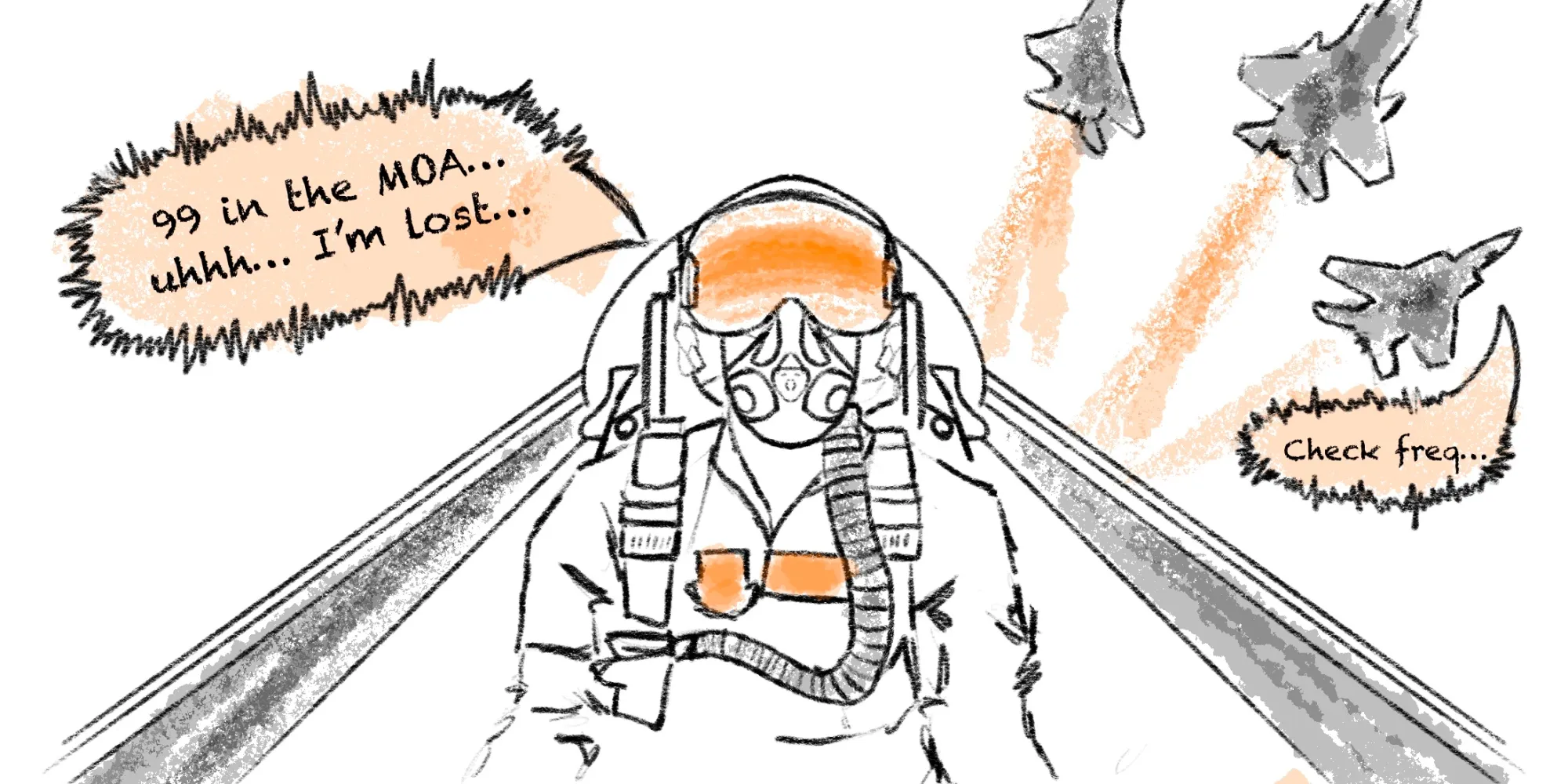How to Sound Cooler on the Radio

Whether you’re flying the world’s fastest fighter jet off an aircraft carrier or your grandpa’s Cessna 172 from the ‘60s, there’s only one thing that really matters: effective and professional communication, aka, sounding cool on the radio.
Don’t believe me? They literally made an entire movie just on how cool Chesley Sullenberger sounded while handling an aircraft emergency and saving hundreds of people’s lives. The real Iceman.

That’s why, whether you’re just starting your journey in aviation at a local airfield or you fly P8’s for a living and are sick of being made fun of by the jet bros, it’s time to tighten up our radio game. Then you can stop annoying ATC with your mouth breathing and maybe they’ll finally clear you direct instead of sending you to go hold for 30 minutes.
1. Think Before Speaking
Just like what everyone’s thinking when your uncle has a few too many at Thanksgiving dinner, figuring out what you want to say before keying the mic is of utmost importance.
For example, if you need to do an ops check/15-minute report to your passenger or instructor: first look over everything in your head. Mentally note your fuel state, cabin pressure, switch settings, etc. and then once you begin the checklist aloud you can rattle off everything in one smooth flow without pausing and chopping it up in between. It takes less time and sounds much more professional.
Another situation could be when you’re recovering to an airfield. Before keying up the tower frequency, check your instruments for where and how far you are from the field (e.g. 12 miles to NW) and what your intentions are (looking to enter the left downwind for the active).
That way you can avoid:
“Springfield County Traffic, Skyhawk-1-5-8, isss uhhhh… 12 miles to theeee uhhh North West?… Going to be… uhhh entering the…. ri-left downwind, Springfield County Traffic”
2. Sound Cool, Calm, and Concise, and Be…
If you’re stressed out, you’re going to sound stressed out and you’re going to stress out the controllers and any aircraft sharing the airspace with you.
Conversely, even if you are stressed (maybe you’re an actual emergency aircraft) take a deep breath and focus on communicating in a calm voice. This will do two things: it will calm yourself down as well as your controller. Of course this is easier said than done but emphasizes the importance of knowing your aircraft and any emergency procedures.
This is part of the reason Sully is such a legend.
3. Know What is Required to Be Read Back
This will come with time but the sooner you develop this skill the easier talking on the radio will be. Sometimes you’ll have great controllers and sometimes you’ll have controllers who are bored silly or simply aren’t very good at their jobs.
Runway hold-short instructions and clearances to takeoff/land must always be read back. Outside of that, there aren’t a ton of strict requirements on what you need to repeat back to ATC but the AIM recommends at a minimum IFR clearances, altitude and vector assignments, and altimeter settings.
So, once you realize what needs to be read back and what doesn’t, you’ll be able to start using some cool pilot jargon like “wilco”, “roger”, or just your callsign if you want to sound super cool.
ATC: ”Cherokee-8-2-7, you’ve got traffic at your 4-o ’clock, no factor”
Noob response: “I’ve got traffic to my 4-o’clock, no factor, Cherokee-8-2-7”
Grand Master response: “Roger, Cherokee-8-2-7”
4. Read the Room
This can be more or less important depending on the radio frequency you’re currently using but understanding where you “fit” into the conversation is critical to effective communication.
Just like how your parents would scold you for interrupting their conversation when you were little by repeatedly yelling “Mom, watch this! Watch this!”, you should feel the same shame if you start talking on Tower frequency without first understanding the situation around you.
If you just heard “Piper-6-9, cleared for the option runway 17” you know the pilot is required to read back his/her landing clearance and in a couple of seconds is probably going to come up on the radio. Therefore, waiting a bit before calling your crosswind turn would probably be the wise thing to do.
The easiest way to sound cool on the radio is sometimes by not saying anything at all so you don’t “step” on other people and create confusion.
5. Visualize Numbers
One of the tougher skills to develop is remembering numbers in a radio frequency or headings and altitudes given to you over the radio.

It’s often like meeting someone for the first time. How many times have you shaken someone’s hand, they tell you their name, and you immediately forget it? Unless you make a point of saying their name in your head and associating it with something memorable, it’ll likely go in one ear and out the other.
And that’s exactly what the key is to remembering numbers passed over the radio while you’re doing a million other things in the plane. Next time you get told a frequency, like 128.15, think:
- All VHF frequencies start with a 1 so we don’t need to remember that
- 28 is your younger sister’s age
- 15 was your football number in high school
It doesn’t have to be complex or elaborate and you barely have to give it any more thought than simply associating the numbers with something a bit more meaningful. If you try this you’ll be amazed with how well your brain prioritizes remembering these numbers.
-EE
